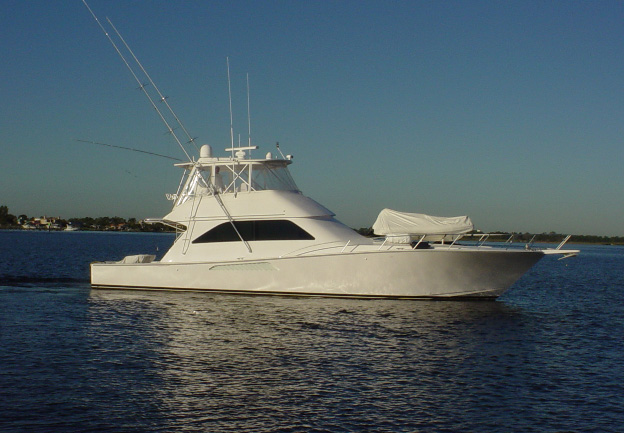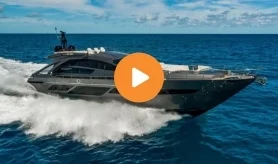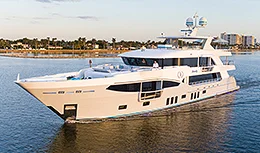- Alaskan Yachts
- Azimut Yachts
- Back Cove Yachts
- Beneteau Yachts
- Benetti Superyachts
- Bertram Yachts
- Boston Whaler
- Broward Yachts
- Buddy Davis Sportfish
- Burger Yachts
- Cabo Yachts
- Catamarans
- Carver Motoryachts
- Center Console
- Chris-Craft Yachts
- Cruisers Yachts
- DeFever Trawlers
- Dufour Sailboats
- Fairline Yachts
- Feadship Yachts
- Ferretti Yachts
- Filippetti Yachts
- Formula Yachts
- Fountaine Pajot Cats
- Grady-White
- Grand Banks Trawlers
- Hargrave Yachts
- Hatteras Yachts
- Hinckley Picnic Boats
- Horizon Yachts
- Hydra-Sports
- Intrepid Boats
- Jarrett Bay Sportfish
- Jeanneau Yachts
- Kadey-Krogen Trawlers
- Lazzara Yachts
- Lekker Boats
- Luhrs Sportfish
- Marlow Yachts
- Maritimo Yachts
- Marquis Yachts
- Mazu Yachts
- McKinna Motoryachts
- Meridian Yachts
- Midnight Express
- MJM Yachts
- Mochi Craft
- Neptunus Motoryachts
- Nordhavn Trawlers
- Nordic Tugs
- Numarine Yachts
- Ocean Alexander Yachts
- Ocean King
- Offshore Yachts
- Outer Reef
- Oyster Sailing Yachts
- Pacific Mariner Yachts
- Palmer Johnson Yachts
56 Viking
![]()

Source: Bill Parks, Sea Magazine
Bask in sun, fish and enjoy the Viking 56’s spacious accommodations
There are big boats, there are serious boats, and there are fast boats. But there aren’t many big boats that are built to take a hard punch and run like a rabbit, too. Meet the new Viking 56 Sport Cruiser, a European-styled head-turner at the dock that can run over a tugboat wake at 30 knots without spilling the Chardonnay.
“This isn’t a boat that just looks good at the dock and then gets you in trouble as soon as you get out there,” said Oakland, California Viking dealer Wayne D’Anna. “There are a lot of those out there.” Can a boat look good and be tough as nails, too? Can Arnold Schwarzenegger wear a tuxedo?
The Viking 56 gets its slicked-back “Euro” look from a partnership with the British boat building firm Marine Projects, Ltd. in Plymouth, Massachusetts. Introduced early this year, the Viking 56 is an “Americanized” version of the Princess 36, sold in Europe. Marine Projects is the largest builder of quality yachts in Europe.
Standing on the dock, the first impression of the Viking 56 is not so much size, but attitude. The boat seems to be in motion, even when it’s not — like a runner leaning forward into the starting blocks, waiting for the gun. The look is sleek and smooth, but the attitude says “ready.” An inspection reveals the details that back up the attitude.
The teak-covered swim platform is bigger than usual — 4.5 feet deep. It’s big enough to tote along a personal watercraft. Or a great place to sprawl on towels after a dip. It has a hot and cold shower nozzle and an electric wind-up for the shore power cord.
Entering the cockpit through a securely hinged door, you are met by what seems like a basketball court of teak. There’s padded seating for six, curved molded steps up to ample walkways forward on either side, and a hefty ladder of 1.25 inch stainless tube, with secure handrails all the way up to the flybridge.
There’s a sliding glass door leading to the saloon — the usual arrangement — but to starboard is a 40 inch wide electric “power window” that goes up and down just like a car window. There are two smaller power windows port and starboard of the lower helm
Although the boat has a sophisticated air conditioning/humidity control system, probably the first thing you would want to do when you drop anchor is crack open a few windows. With the Viking 56, you just push a button.
Fine Breeding
When you slide the doors closed and sink into one of the plush seats, the sophistication and fine breeding of the boat become apparent. The 56 we tested had light cherry cabinetry, hand-finished with 12 coats of lacquer. Sanding and baking between each coat left a glass-smooth finish with deep highlights. Other woods are available. Surfaces are mostly curved, giving the saloon an organic, inviting shape.
Despite an open feel, storage is everywhere, behind cabinet doors secured by brass push-button locks. We’ve seen plastic versions, but these drive a metal bar into a slot when you click the button in, leaving the door secure until you click the button again.
Two rows of cabinet doors to port conceal the entertainment center — a TV, an AM-FM stereo, storage for glasses, a cube refrigerator and a VCR. The VCR can be switched to show the same movie on screens throughout the boat.
Settees surround a small table, finished with the same fine-grain cherry. Speakers and lights are mounted overhead. There is also foot-level courtesy lighting throughout the boat.
A step forward leads to the dining area to port. To starboard and down four steps is the galley, complete with a flat-top electric range, a microwave/convection oven and a deep stainless sink.
The layout works perfectly in several ways. First, if you’re cooking in a seaway, the sunken galley is secure — you can only lurch so far because you’re surrounded by cabinets. While you’re waiting for the pot to boil, you can stand on the second step, lean an elbow on the smooth wooden railing, and keep up a conversation with guests in the saloon or sitting at the dinette. An elegant thin wood inlay trim surrounds the galley.
The stairway to the galley lifts up to reveal three more steps to a lower level housing a washer-dryer, pantry shelves, a nine-bottle wine rack and an optional deep-freeze.
Above the galley to starboard is the heart of the boat — the lower helm station.
A boat reveals its true character at the helm station, and the Viking 56 helm shows it means business. Many boats don’t even have lower helms. They assume inside is for partying and all driving is done up on the flybridge, regardless of the weather.
The Viking 56 assumes there will be occasions when you will want to drive inside — rain, snow, high wind, lumpy seas and bad weather in general. This is a boat that can actually go somewhere, while lesser boats stay at the dock.
Mounted in front of a car-sized wheel are three digital Autohelm instruments: autopilot, speed and depth. Above is an array of analog gauges: tachometer, oil pressure, fuel level, manifold pressure, voltmeter for each engine, plus a rudder angle indicator in the center. Handy to starboard are ignition keys, an alarm tester to check the engine “idiot lights,” a panel to control a twin-beam searchlight and a Shipmate VHF with a keypad handset. The microphone for the loudhailer and intercom is also to starboard.
To port of the helm are a Furuno radar and an Autohelm GPS chartplotter. But there’s a provision for paper charts, too. A shallow dash bin with a hinged clear-plastic flap lets you fold the chart inside, displaying the part you need under the flap. A “joystick” controls the bow thrusters.
A Plastimo compass is mounted directly ahead. Dash surfaces are buff-finished to reduce windshield glare. There’s a chart lamp that clips securely to the dash when not in use. There’s even a molded-in beverage holder.
Visibility is superb. Three beefy 35.5 inch wiper blades are poised to keep spray off the windshield. The helm seats are mounted on rails so you can adjust them forward and back. It’s difficult to imagine weather conditions when you wouldn’t be entirely comfortable at the wheel, even during long night watches.
It’s a Sleeper
If the Viking 56 hasn’t spoiled you rotten yet, step forward down three steps to the staterooms. This is where it gets really cushy.
The master stateroom has a queen-sized oval berth, with a round opening hatch overhead. The hatch has screen and sunshade coverings that roll out and snap into place. Our test boat had mirrors on the forward bulkhead.
There is a hanging locker and lots of other cabinets finished with the same glossy cherrywood finish as the saloon but with some subtle differences. On the outsides of the doors the grain is arranged to form a “star” effect about eye level, but inside the cabins the grain is straight and vertical. Side-by-side cabinet doors have continuous grain — they were all cut from the same piece of wood and arranged to give continuity. This is carrying detail to a pretty high level.
A built-in TV is hidden by cabinet doors that fold and slide out of the way for uncluttered viewing. Four speakers are mounted overhead.
The master stateroom has a head with a unique shower. A curved door slides in a track, enclosing the bather in clear Lucite. The shower head is adjustable for height and can be hand-held.
Two nearly identical guest staterooms, each with twin berths that can be made into queens, are positioned to port and starboard. They share a second head similar to the one in the master stateroom. All cabins have opening ports, independent air conditioning controls and clever storage compartments everywhere.
There is also a cabin for two in the stern with its own head that can be used for the crew. D’Anna points out that kids love it, too, partly because access is down a ladder “hidden” by one of the cockpit cushions.
But you won’t want to spend all your time indoors, even in such plush surroundings. The upper helm station is reached by sturdy stainless steel ladders from the saloon and the cockpit. Both lead to openings that can be secured, making the upper deck nearly childproof.
Upper helm instruments repeat most of the lower ones, minus the radar, plotter and some engine gauges. Forward on the main deck is a queen-sized sunbathing pad; aft on the helm deck is another one. The driver can also see where the boat is headed, with clear views all around.
A fairly conventional acrylic Venturi surrounds the helm, deflecting the breeze just above hat level. And the Viking 56 does develop some breeze, our test boat cruising easily at 26 to 28 knots and maxing out around 33 knots, which is actually faster than the top speed estimated by the manufacturer.
Start Your Engines
Our test boat, equipped with twin 600 hp diesels, showed some real grit, popping up on plane easily and tracking true with hands off the wheel, even through a few tugboat wakes along the San Francisco waterfront. Detroit Diesel and Volvo Penta have teamed up to provide the best performance for Viking Sport Cruisers. As part of the Detroit Diesel Marine Power line-up, Volvo Penta engines feature the same support, service and warranty policies and procedures as all DDC marine products.
The Viking 56 carved sharp turns like a runabout, losing little speed even in fairly tight corkscrews. The hard chines dug in and kept the boat from heeling more than 10 degrees, even in quick turns.
Sound levels at cruising speed were easily “talkable,” even at the lower helm. At cruising speeds, the diesels sound like a vacuum cleaner in the next room — thanks to some thorough soundproofing. At higher speeds, the turbos kick in, with a high-pitched whine something like a jet warming up in the distance.
Even at speeds in the mid-20s, the San Francisco Bay chop produced a sensation not unlike driving on a gravel road. Circling back on the boat’s own wake produced a minor “speed bump” effect. Engine choices include Caterpillars in the 420 and 435 hp range.
Back at D’Anna’s Oakland Estuary docks, we explored some features on the swim platform that further illustrate the serious intent of the Viking 56.
Behind a door to starboard is sort of an emergency station — three manual valves to turn off the fuel supply, port and starboard engines, plus a generator. There’s also a manual bilge pump in case the electric ones fail. There’s also an override switch for the automatic fire extinguishers.
Under a hatch in the swim platform is a compartment for an emergency raft. A six-person raft in a valise would fit nicely, but two stainless steel tie-downs are nearby in case you want to mount a bigger one in a canister.
Obviously, some serious thinking has been put into all aspects of this design to make it fast, comfortable and safe.
Interested? D’Anna says the test model goes out the door — or down the dock — for about $1.065 million. He’ll even arrange a slip and find you a skipper to move the boat around the Pacific to your vacation sites. And the Viking 56 Sport Cruiser offers all the amenities to please the most discriminating pleasureboater.



